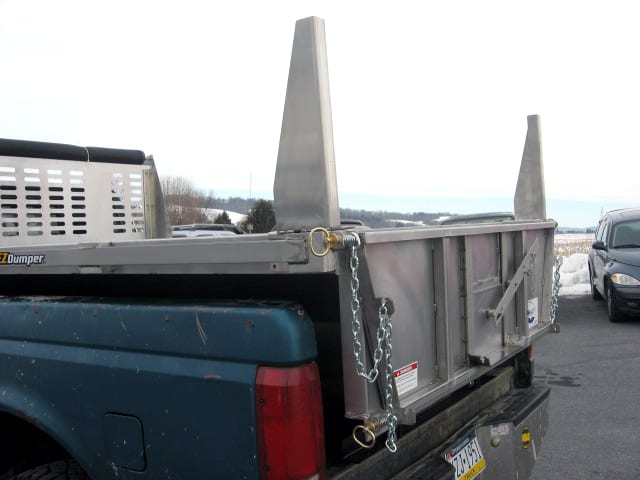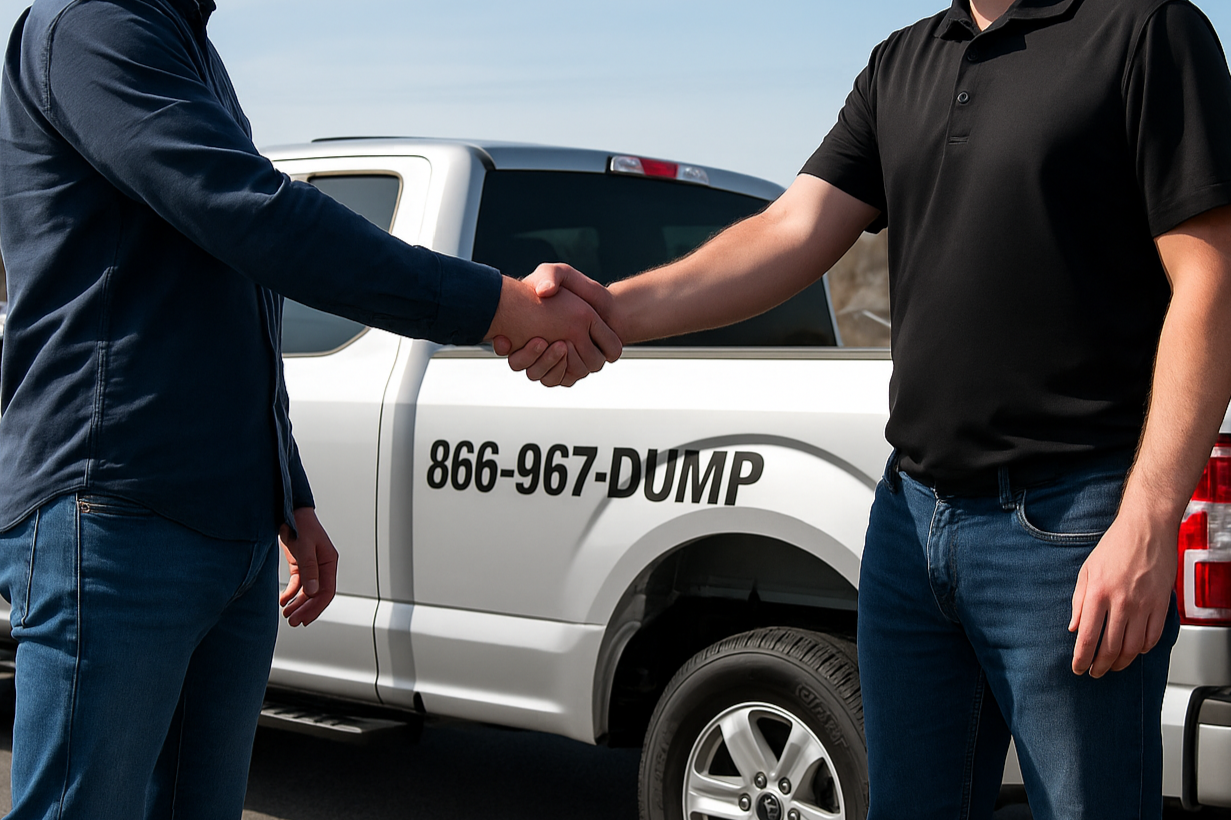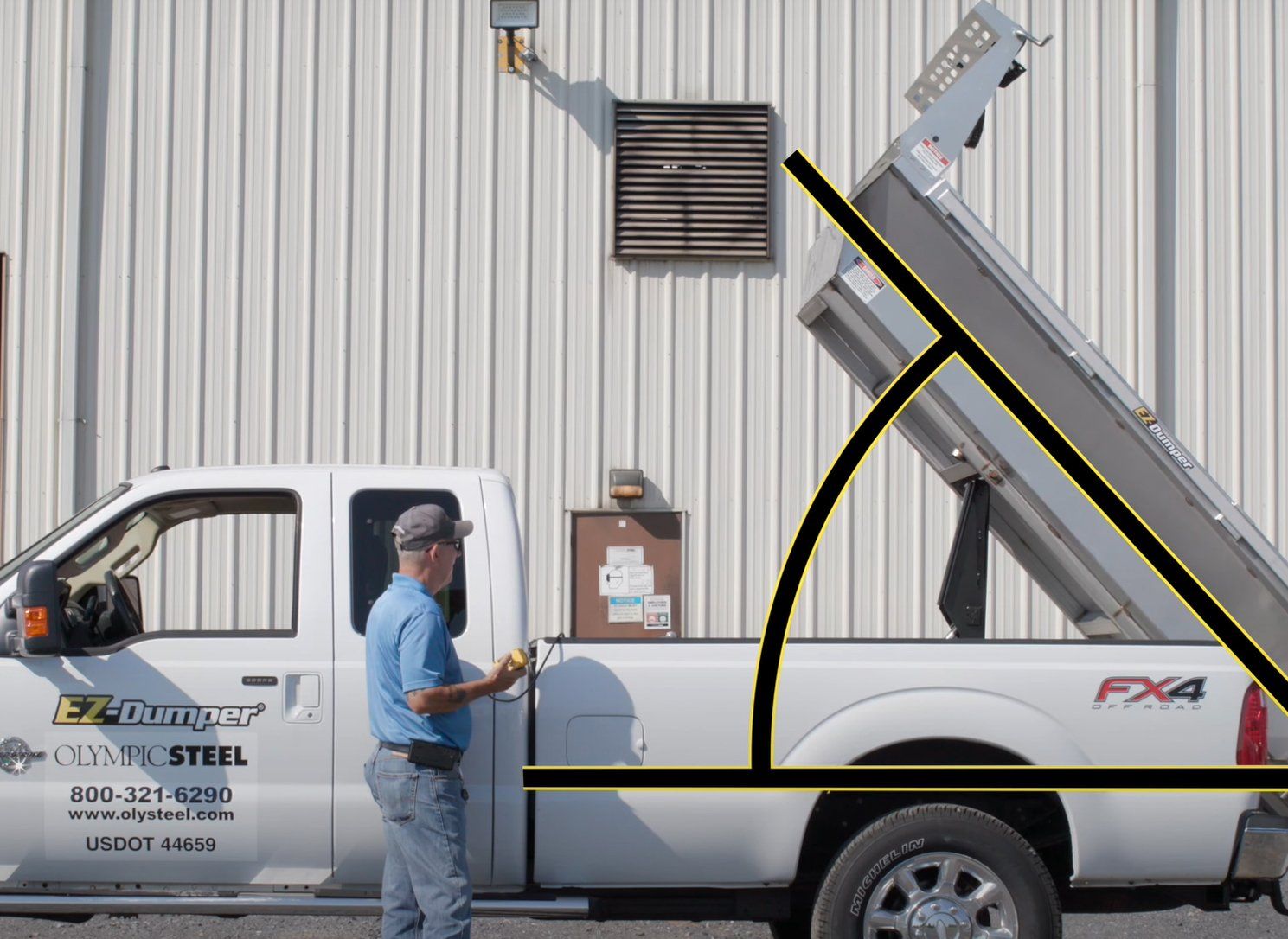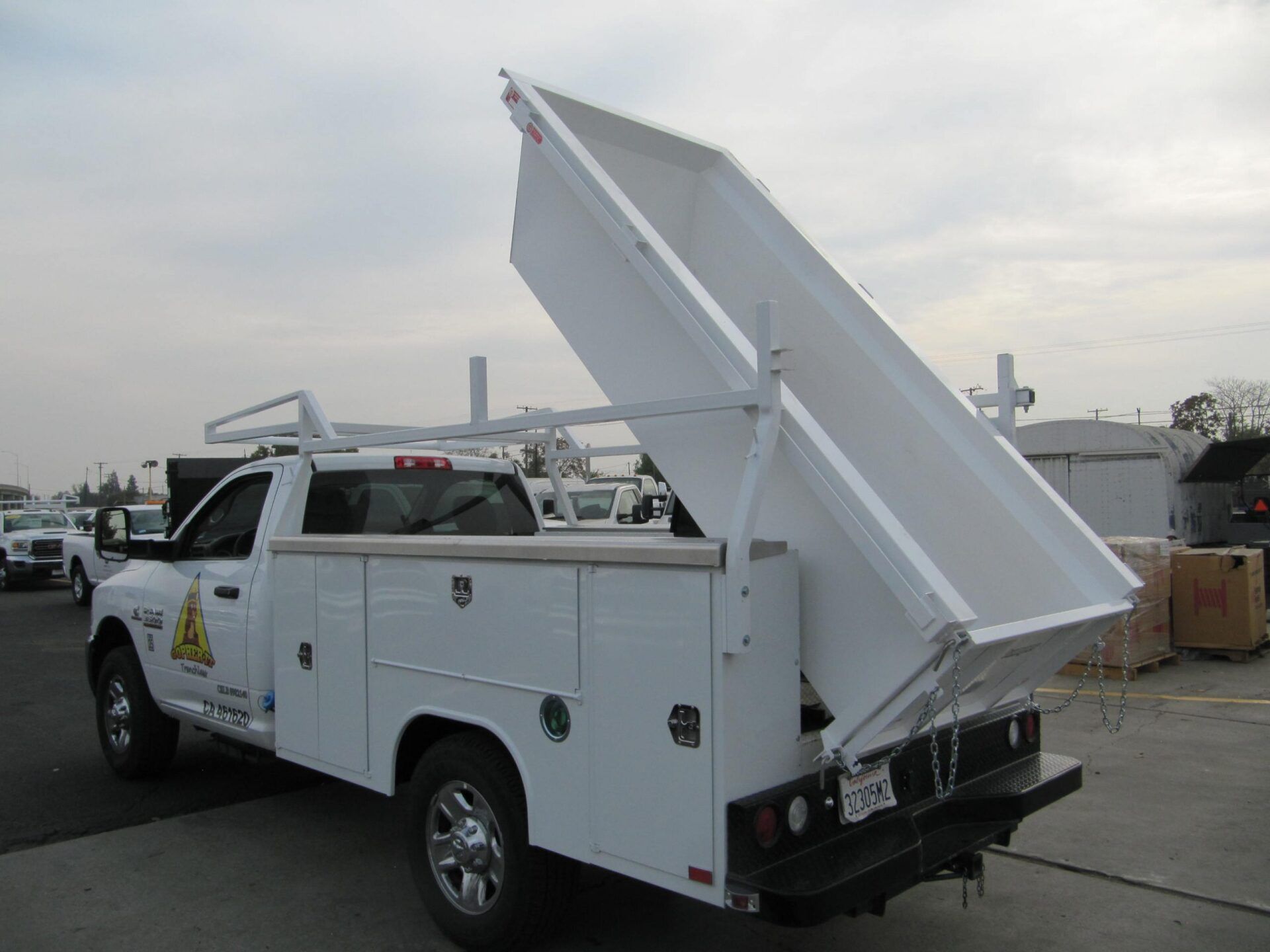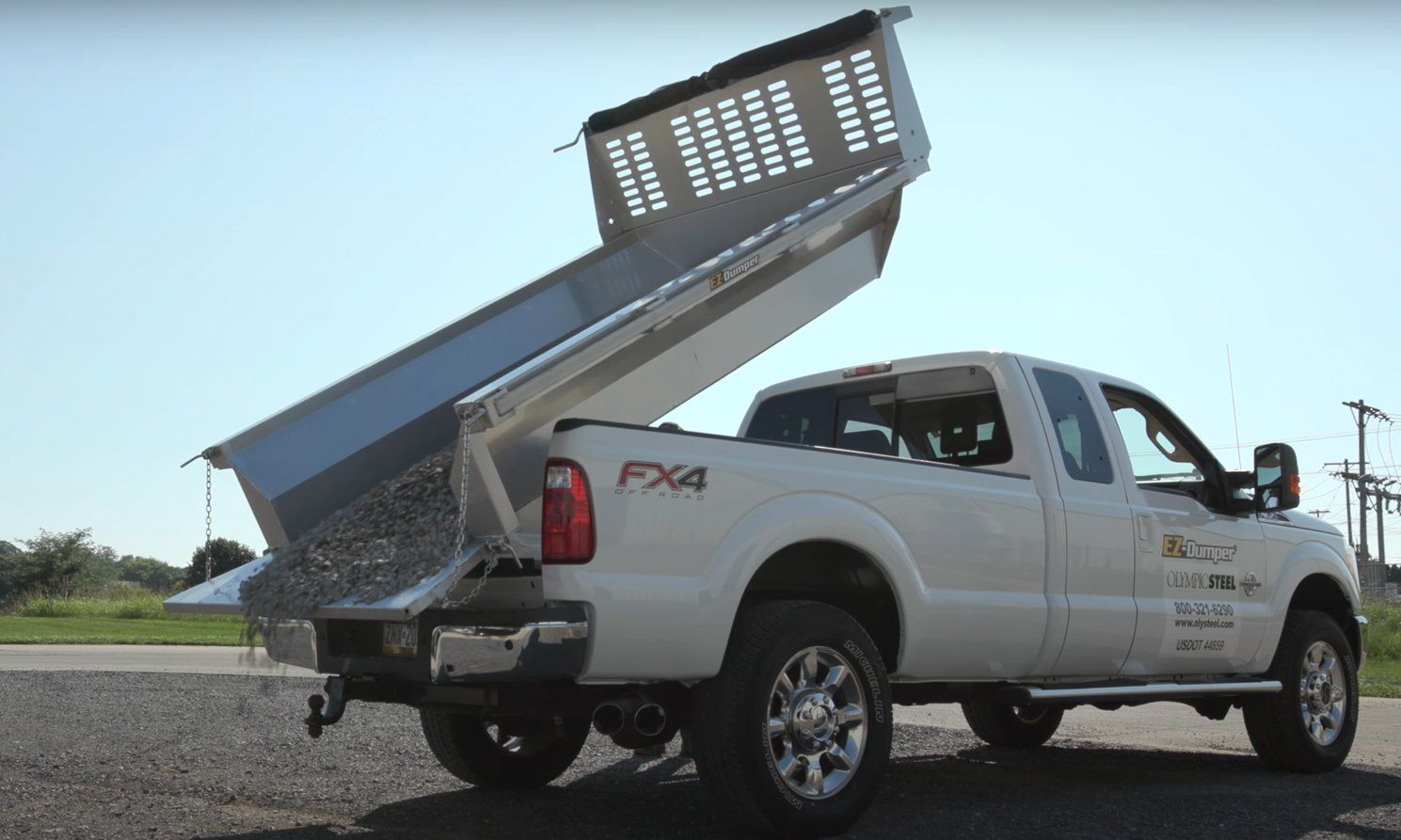Steel vs. Poly Dump Inserts: Which Material Works Best?
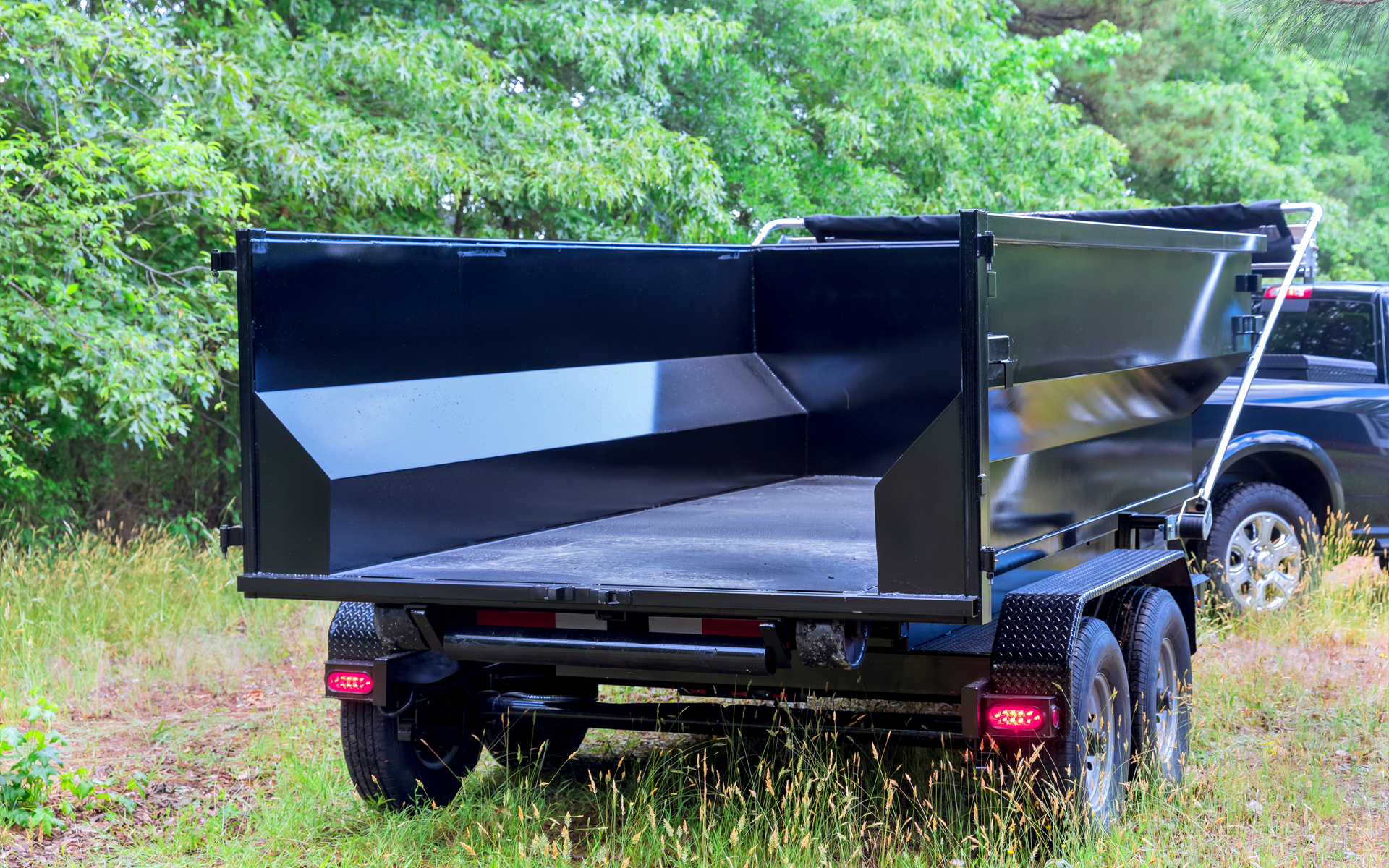
Dump inserts transform ordinary pickups into powerful work trucks. But before investing in one, many contractors and truck owners face a key decision: what material is best?
The market offers both steel dump inserts and polymer (poly) dump inserts. While both serve the same purpose, the differences in performance, durability, and long-term value are significant.
EZ-Dumper® has specialized in
steel and stainless steel hydraulic dump inserts since 1972. While we don’t manufacture poly inserts, many buyers ask about them when comparing options. This guide breaks down how steel and poly inserts stack up, and why the choice of material can impact not just your workload, but your bottom line.
Understanding Steel Dump Inserts
Steel dump inserts have been the industry standard for decades. EZ-Dumper®’s 12-gauge steel floors and 14-gauge steel sides are engineered to handle punishing environments, from heavy gravel and construction debris to wet mulch and soil.
Steel is strong, rigid, and dependable. When paired with EZ-Dumper®’s 6,000 lb lift capacity and 51° dump angle, it creates a system designed for professional use. Powder coating protects the surface from rust and corrosion, extending service life even under tough jobsite conditions.
For contractors, landscapers, and municipalities, steel remains the most versatile material for daily hauling.
Understanding Poly Dump Inserts
Poly dump inserts are made of high-density polyethylene (HDPE), a lightweight but durable plastic. Several manufacturers produce poly inserts as alternatives to steel.
The main appeal of poly is corrosion resistance. Poly won’t rust, making it attractive for operators who work with wet or corrosive materials. It’s also lighter than steel, reducing the overall weight added to the truck.
However, poly inserts may lack the same strength and structural rigidity as steel. While they can handle typical landscaping loads like mulch or brush, they are more prone to cracking or warping under extreme use, especially with dense materials like stone or asphalt.
Cost Comparison
Price is often one of the first differences buyers notice between steel and poly.
- Steel Dump Inserts: Usually priced higher, especially stainless steel models, but the cost reflects longevity and performance in heavy-duty applications.
- Poly Dump Inserts: Generally less expensive up front. For light-duty users, this can be appealing but long-term replacement costs may outweigh the savings.
EZ-Dumper® inserts are built to last decades with proper care, which often makes steel the more cost-effective choice over time.
Durability in Harsh Conditions
One of the clearest differences between steel and poly inserts is durability under stress.
Steel inserts are designed to take impact. Sharp debris, heavy stone, or frozen loads can be dumped repeatedly without damaging the structure. Poly inserts, while tough, may gouge, crack, or flex under similar conditions.
For climates with extreme cold, poly materials can become brittle, further increasing the risk of damage. Steel, especially when properly coated, maintains structural integrity regardless of temperature swings.
Weight and Payload Considerations
The weight of the insert itself affects how much payload your truck can carry.
- Steel Insert Weight: Around 700–800 lbs depending on the model.
- Poly Insert Weight: Often 100–150 lbs lighter.
While the lighter poly may allow for slightly more payload within the truck’s GVWR, the difference is minimal compared to the 6,000 lb lifting capacity of both systems. For most operators, the strength of steel outweighs the modest advantage in weight savings.
Ease of Maintenance
EZ-Dumper® steel inserts are finished with a durable powder coat that protects against rust. Occasional touch-ups and lubrication of grease points keep the unit in excellent shape. Stainless steel models require even less maintenance, as stainless naturally resists corrosion.
Poly inserts, while rust-proof, can be more difficult to repair. Cracks or punctures in the poly body often require full replacement instead of spot repair.
Steel vs. Poly: Side-by-Side Comparison
| Feature | Dump Insert (e.g., EZ-Dumper®) | Dump Trailer |
|---|---|---|
| Feature | Extremely strong, handles heavy materials | Adequate for lighter loads, may crack under stress |
| Durability | Long lifespan, impact-resistant | Can wear faster, especially in extreme cold |
| Weight | 700–800 lbs | 550–650 lbs |
| Corrosion | Powder-coated or stainless steel resists rust | Naturally rust-proof |
| Maintenance | Simple: grease, touch-up paint, inspect | Limited repair options if damaged |
| Cost | Higher upfront, long-term value | Lower upfront, possible early replacement |
| Best Use Cases | Construction, landscaping, municipal work | Light landscaping, occasional hauling |
Which Material Is Right for You?
If you’re a contractor, landscaper, or heavy-duty operator who depends on your truck daily, steel or stainless steel is the better investment. The structural strength, reliability, and serviceability of steel inserts far outweigh the modest benefits of poly.
Poly inserts can make sense for light-duty homeowners or small landscaping operations where loads are limited to brush or mulch. But for professional-grade work, steel is the proven material that delivers confidence on every jobsite.
FAQs About Steel vs. Poly Dump Inserts
Are poly dump inserts cheaper than steel?
Yes, poly inserts are often less expensive upfront. But long-term, steel inserts typically provide more value due to durability and lifespan.
Do steel inserts rust?
Standard steel inserts can rust if unprotected, but EZ-Dumper® uses powder coating for protection. Stainless steel models resist corrosion naturally.
Which insert is lighter?
Poly inserts are lighter by about 100–150 lbs, but the weight difference rarely impacts payload compared to the strength advantage of steel.
Can poly inserts handle gravel or asphalt?
Not recommended for repeated heavy loads. Poly is best suited for mulch, brush, and light debris. Steel inserts are designed for dense materials.
Which material lasts longer?
Steel inserts, when maintained, often last decades. Poly inserts may need replacement sooner if cracked or damaged.
Final Thoughts
Choosing between steel and poly dump inserts comes down to intended use. For serious hauling, heavy-duty contractors, and municipal operations, steel or stainless steel remains the industry standard. It offers unmatched strength, long-term durability, and the ability to handle everything from stone and gravel to wet, corrosive loads.
EZ-Dumper® has specialized in steel and stainless dump inserts for over 50 years, helping customers across the U.S. and Canada save time, reduce costs, and work more efficiently. While poly may work in limited scenarios, steel continues to be the trusted choice for those who need reliability day after day.


